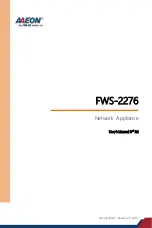
38-81
Cisco Catalyst Blade Switch 3130 and 3032 for Dell Software Configuration Guide
OL-12247-04
Chapter 38 Configuring IP Unicast Routing
Configuring Multi-VRF CE
•
Multi-VRF CE does not affect the packet switching rate.
•
VPN multicast is not supported.
•
You can configure 104 policies whether or not VRFs are configured on the switch or the switch
stack.
•
You can enable VRF on a private VLAN and the reverse.
•
You cannot enable VRF when policy-based routing (PBR) is enabled on an interface and the reverse.
•
You cannot enable VRF when Web Cache Communication Protocol (WCCP) is enabled on an
interface and the reverse.
Configuring VRFs
Beginning in privileged EXEC mode, follow these steps to configure one or more VRFs. For complete
syntax and usage information for the commands, see the switch command reference for this release and
the
Cisco IOS Switching Services Command Reference, Release 12.2
.
Use the
no
ip vrf
vrf-name
global configuration command to delete a VRF and to remove all interfaces
from it. Use the
no ip vrf forwarding
interface configuration command to remove a specific interface
from the VRF.
Command
Purpose
Step 1
configure terminal
Enter global configuration mode.
Step 2
ip routing
Enable IP routing.
Step 3
ip vrf
vrf-name
Name the VRF, and enter VRF configuration mode.
Step 4
rd
route-distinguisher
Create a VRF table by specifying a route distinguisher.
Enter either an autonomous-system number and an
arbitrary number (nnn:y) or an IP address and arbitrary
number (A.B.C.D:y)
Step 5
route-target
{
export
|
import
|
both
}
route-target-ext-community
Create a list of import, export, or import and export
route-target communities for the specified VRF. Enter
either an autonomous-system number and an arbitrary
number (nnn:y) or an IP address and an arbitrary number
(A.B.C.D:y). The
route-target-ext-community
should be
the same as the
route-distinguisher
entered in Step 4.
Step 6
import map
route-map
(Optional) Associate a route map with the VRF.
Step 7
interface
interface-id
Specify the Layer 3 interface to associate with the VRF,
and enter interface configuration mode. The interface can
be a routed port or an SVI.
Step 8
ip vrf forwarding
vrf-name
Associate the VRF with the Layer 3 interface.
Step 9
end
Return to privileged EXEC mode.
Step 10
show ip vrf
[
brief
|
detail
|
interfaces
]
[
vrf-name
]
Verify the configuration. Display information about the
configured VRFs.
Step 11
copy running-config startup-config
(Optional) Save your entries in the configuration file.












































